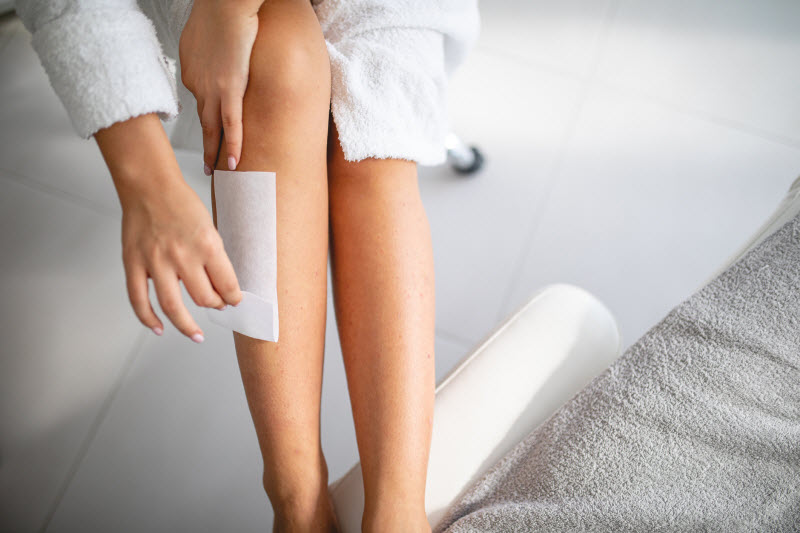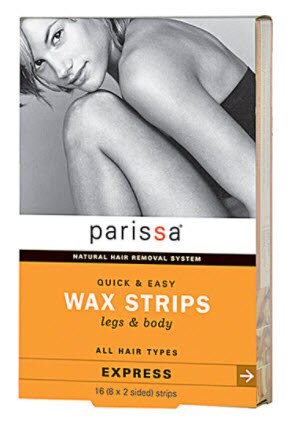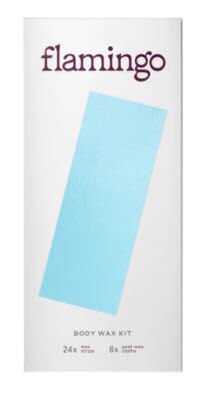Waxing is a popular – not to mention simple and effective – way to get rid of unwanted hair. It can be done by a professional at a salon or spa, but it’s also really easy to do right at home (saving you time and money!). Supplies can be found at just about any drugstore or online, and all you need is a quick tutorial to get started. Of course, if might take some time to master waxing harder-to-reach or sensitive areas – but practice helps!
Ready to give it a try? Check out this handy guide with tips from an esthetician to wax smoothly and easily – with extra help for treating your skin to avoid irritation or side effects.
Which type of wax is best?
To begin, you’ll need to decide on the type of wax you’ll use. Some estheticians and waxing specialists use hard wax with a stick; others use softer wax that’s applied then gently peeled away from the skin. Wax strips are available in a variety of sizes, for different areas of your body (for example, your face or your bikini area).
“I’ve used many different types of waxing products such as Cirepil, Gigi and Satin Smooth, but my favorite would be Satin Smooth by far,” says Amy Koehlinger, professional esthetician and waxing expert at Avanti Salon & Spa.
Soft wax requires strips, while hard wax requires proper application, as you’ll be manually shaping a “tab” to pull yourself.
“There are different parts of the body that require hard wax such as nostrils, ears or the bikini area,” says Koehlinger. As for other areas, you can choose the type of wax you prefer. You’ll want to take into account the type of skin and the area that will be waxed.
“Hard wax only adheres to hair and not to the skin itself, so, it will pull on the skin less and you can go over the area more than once if needed—but no more than three times,” says Koehlinger. Hard wax may be better for people with mature skin or dry skin, as these skin types are more prone to irritation from waxing.
Strip wax is more effective for vellus hairs, or “peach fuzz.” It gives you a cleaner look for eyebrows, and removes hair from the upper lip more effectively. It’s easier to use strips in areas with soft hair, too, using a “one-two-three, pull-off!” technique.
Tips for Waxing at Home
Prepping your skin
Before waxing, it’s important to wash areas thoroughly with soap and water.
“Make sure you prep the skin, and be sure the area is clean before you start the process,” Koehlinger suggests. “If the area is moist or you’re sweating a bit, use baby powder to soak up any moisture.”
This is especially important for any area of the body (including underarms or bikini area) that tends to sweat and hold onto excess moisture. Skin should be dry before applying wax in order to remove the hair effectively.
Most people can get away with just soap, water and a towel dry, but baby powder definitely helps absorb any excess moisture.
How to wax
Once you’ve cleaned and prepped your skin, you’re ready to get started. Remember, waxing is easy and won’t cause issues as long as you’ve applied the wax properly and remove it correctly!
Apply wax in the same direction of the hair growth and pull it off in the opposite direction. It’s as simple as that.
“Apply pressure with your hand to help relieve any pain or tingling sensations,” says Koehlinger. “And use toner, like witch hazel or almond oil, to clean up wax residue.” This will help ease the “ouch” with each pull, while also soothing skin and preventing redness and irritation.
Side effects to be aware of
If your skin isn’t used to waxing, or you’re removing a lot of hair, you may experience a bit of redness or some small bumps. Typically, though, waxing doesn’t cause any major adverse reactions.
Koehlinger also notes that if you’re using skincare products such as retinol or alpha hydroxyl acids (which cause skin sensitivity), it’s a good idea to be cautious when waxing. Consider consulting with an esthetician or doctor before trying the technique.
Featured products:



